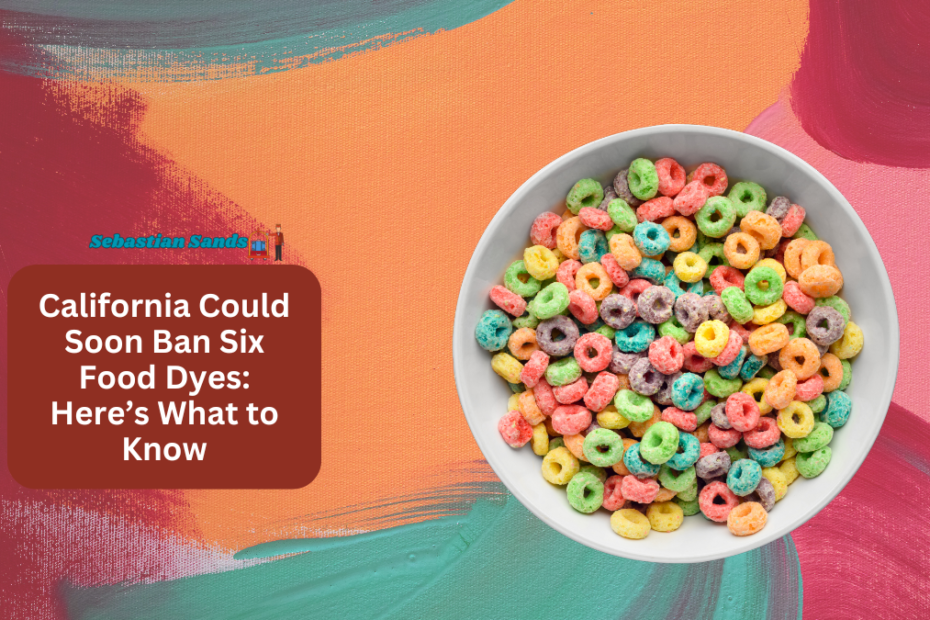In an effort to improve the health and safety of children, California lawmakers have passed a bill that will ban six artificial food dyes from being served in schools. This new legislation, called the California School Food Safety Act, is aimed at removing artificial dyes that have been linked to behavioral problems in children. If signed into law, it could significantly change the types of foods offered in schools across the state.
The Fight Against Harmful Food Additives
This isn’t the first time that California has taken steps to regulate the use of harmful chemicals in food. Recently, Governor Gavin Newsom signed the California Food Safety Act, which bans the sale of foods containing chemicals like brominated vegetable oil, potassium bromate, propylparaben, and red dye 3.
Now, with the latest bill, California is focusing on artificial food dyes that have raised concerns about their potential impact on children’s health.
Read More : Popeyes Launches $25 Wings Tailgate Bundle Just In Time For Football Season
The California School Food Safety Act: What’s Happening?
The bill at the center of this change is Assembly Bill 2316, also known as the California School Food Safety Act. Initially introduced by Assemblymember Jesse Gabriel, the bill has undergone several revisions since its introduction in March 2024.
It successfully passed the California Senate on August 28 and received approval from the Assembly the following day. Now, it’s waiting for Governor Newsom’s signature to become law.
What Dyes Are Being Targeted?
The primary focus of this legislation is the prohibition of specific artificial food dyes in schools. The bill would prevent public school districts and charter schools from offering foods or drinks that contain the following dyes:
- Red Dye No. 40
- Yellow Dye No. 5
- Yellow Dye No. 6
- Blue Dye No. 1
- Blue Dye No. 2
- Green Dye No. 3
These dyes are commonly found in a wide range of popular food items like ice creams, candies, cheese-flavored chips, and certain cereals. Some well-known products that may contain these dyes include Cheetos, Fruity Pebbles, and Doritos.
According to Dr. Kelly Johnson-Arbor, a toxicologist at MedStar Health, three of these dyes—Red 40, Yellow 5, and Yellow 6—make up roughly 90% of the food dyes used in the United States. Their widespread use raises concerns about the potential health risks they pose, especially to children.
Read More : Find The Cheapest Taco Bell Locations In Your Area With This Website
What Are The Side Effects of These Dyes?
The main concern surrounding these artificial dyes is their potential link to behavioral issues in children, particularly those with ADHD (Attention-Deficit/Hyperactivity Disorder).
Dr. Jamie Alan, a teacher at Michigan State University who studies drugs and poisons, says that some kids are more sensitive to these colors even though not all children are affected.Consumption of these dyes may lead to adverse neurobehavioral outcomes, such as exacerbated ADHD symptoms.
Studies on this topic have produced mixed results, but there is growing evidence that artificial food dyes are linked to hyperactivity and other behavioral problems.
A report by the California Office of Environmental Health Hazard Assessment (OEHHA) in 2021 analyzed both human and animal studies. The findings indicated that synthetic food dyes are associated with behavioral issues in children, including hyperactivity and impulsivity.
The OEHHA report included “challenge studies” where children were asked to avoid artificial food dyes for several weeks, after which products containing the dyes were reintroduced. The researchers found that while not all children showed adverse effects, some were more likely to display hyperactive behaviors after consuming these dyes.
In fact, 16 out of 25 studies reviewed indicated a connection between artificial dyes and behavioral problems, and more than half of these studies deemed the link to be statistically significant.
How Much Of These Dyes Is Too Much?
Despite these findings, there is still debate about how much of these dyes is safe for children to consume. Dr. Alan notes that some children are far more sensitive to these additives than others.
Even though the Food and Drug Administration (FDA) has set acceptable daily intake levels for these dyes, meaning they are deemed safe when consumed within certain limits, newer studies suggest that even “safe doses” could cause neurobehavioral issues in some children.
According to Dr. Johnson-Arbor, the precise amount of dye needed to cause health problems in children remains unclear, and further research is needed to better understand the effects of these dyes on behavior.
Read More : Chipotle Launches Halloween Costumes In Collaboration With Spirit Halloween
What’s Next For The Bill?
Governor Newsom has until the end of September to decide whether to sign the California School Food Safety Act into law. If you’re concerned about how artificial food dyes may affect your child, Dr. Alan recommends talking to your pediatrician for guidance.
Thanks for visiting our site hope you like it and find it helpful..
